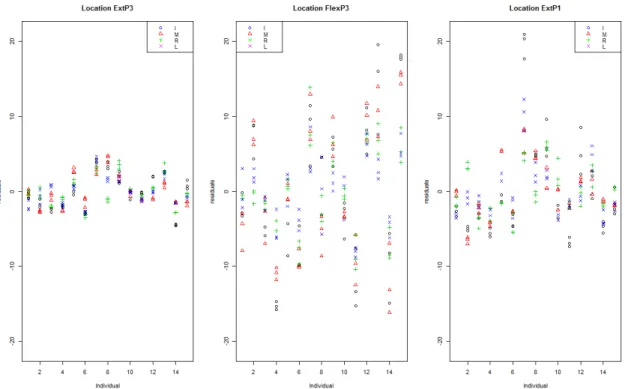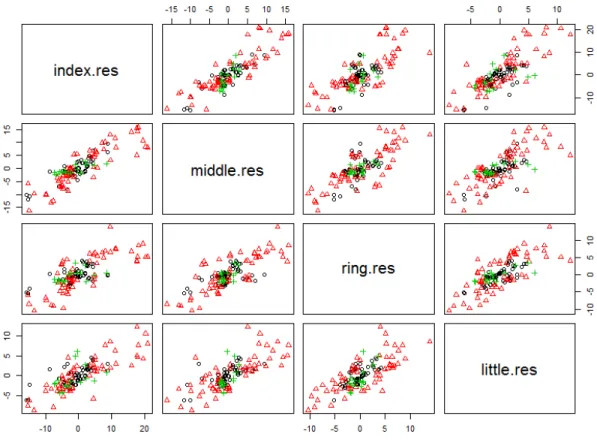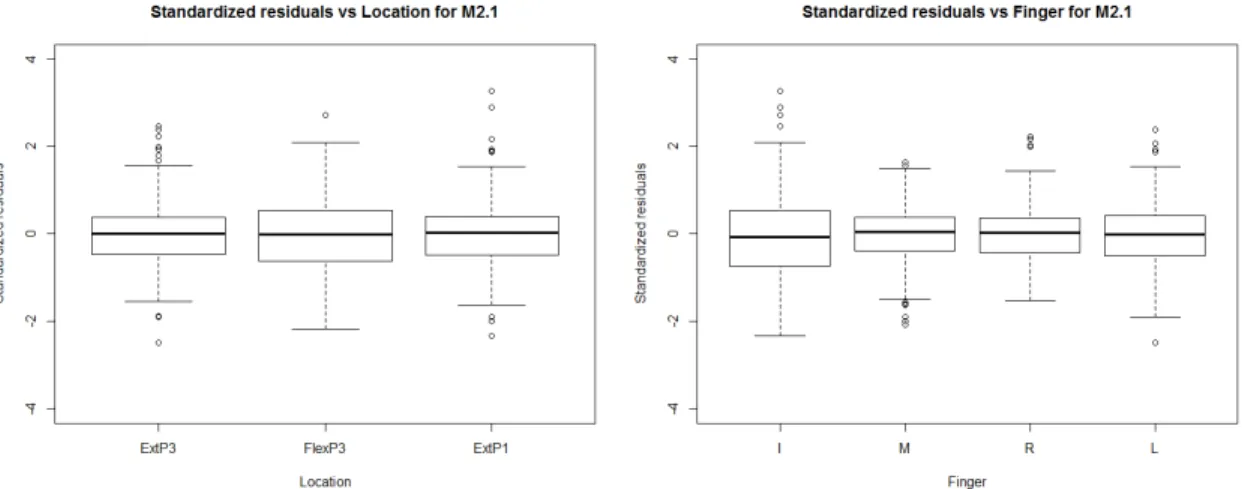Modelling finger force produced from different tasks using linear mixed models with lme R function
Texte intégral
Figure




Documents relatifs
In this scenario, a user interacts with a mobile phone using the index finger on phone’s back camera equipped with a wide angle lens3. The ability to precisely capture index
Decoding Finger Flexion using amplitude modulation from band- specific ECoG.. European Symposium on Artificial Neural Networks - ESANN 2009, Apr 2009,
The initial velocity of the string at the release instant is denoted V in Tab. As for D, the order of magnitude of V is relevant for the robotic finger with A-shaped fingertip
Although the mentioned characteristics of tapping performance can be used for distinction between healthy individuals and patients (Table 1), they are not suitable for the
The controlled experiment of a vision-based implementation of AirMouse shows the promising pointing performance of the technique compared with existing and
We report three different results: first, for a given finger, we compute the estimated finger flexion using a linear model learned on all samples (including those where the
using a unique linear model trained on all samples (including those ones where the considered finger is not moving), (b) we decode finger flexions with our switching decoder
In this paper, we present the morphological optimization of our tendon driven under- actuated robotic hand prosthesis’ finger, to improve precision grasping.. The optimization





